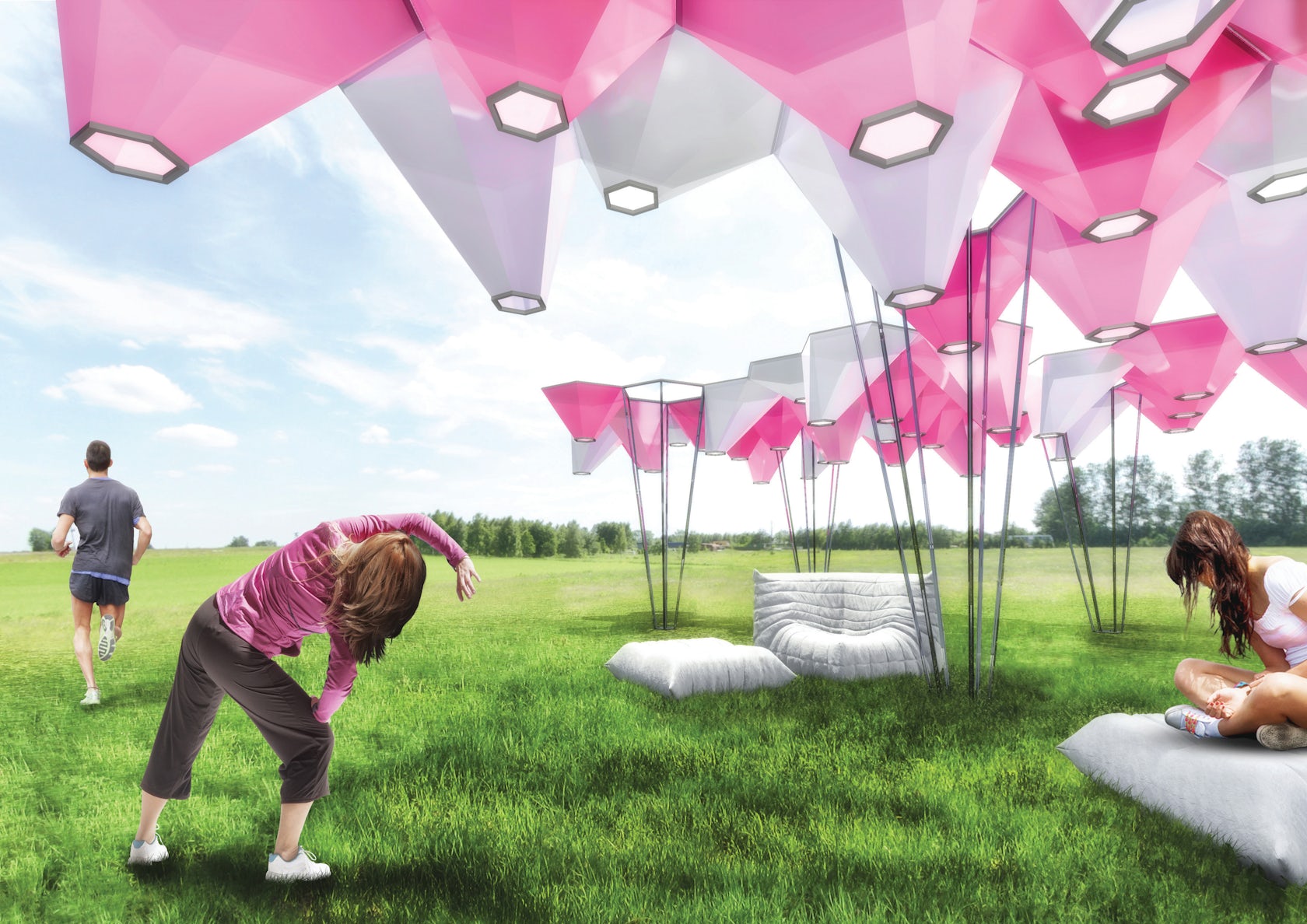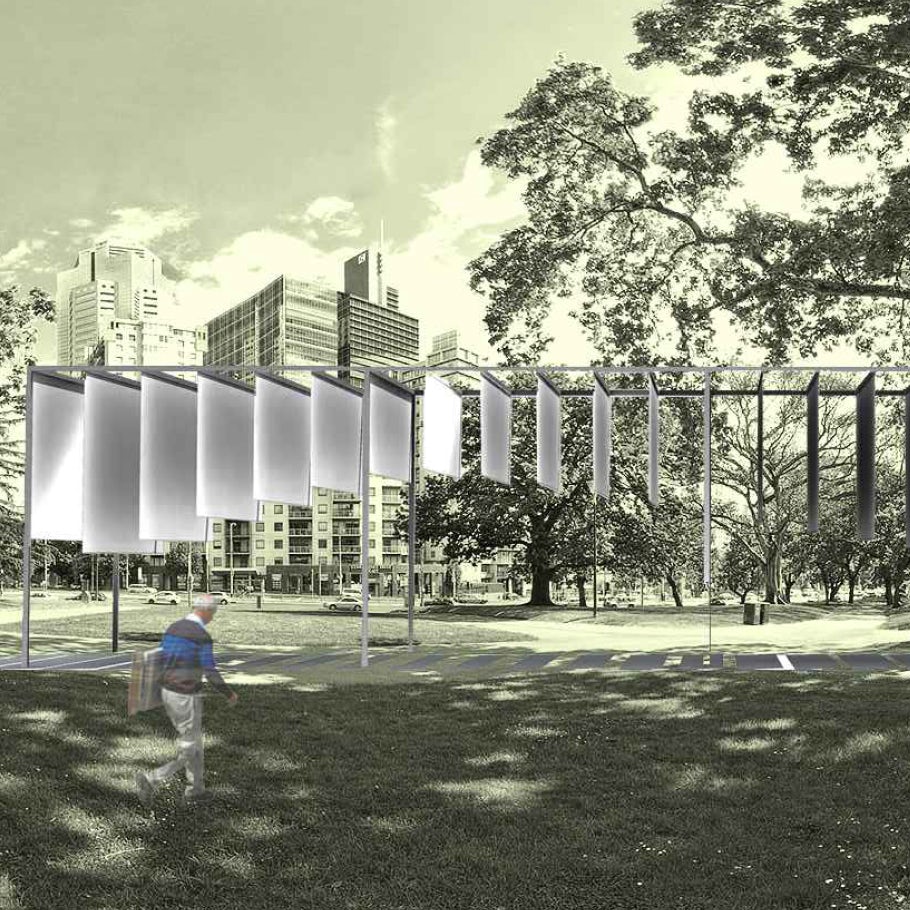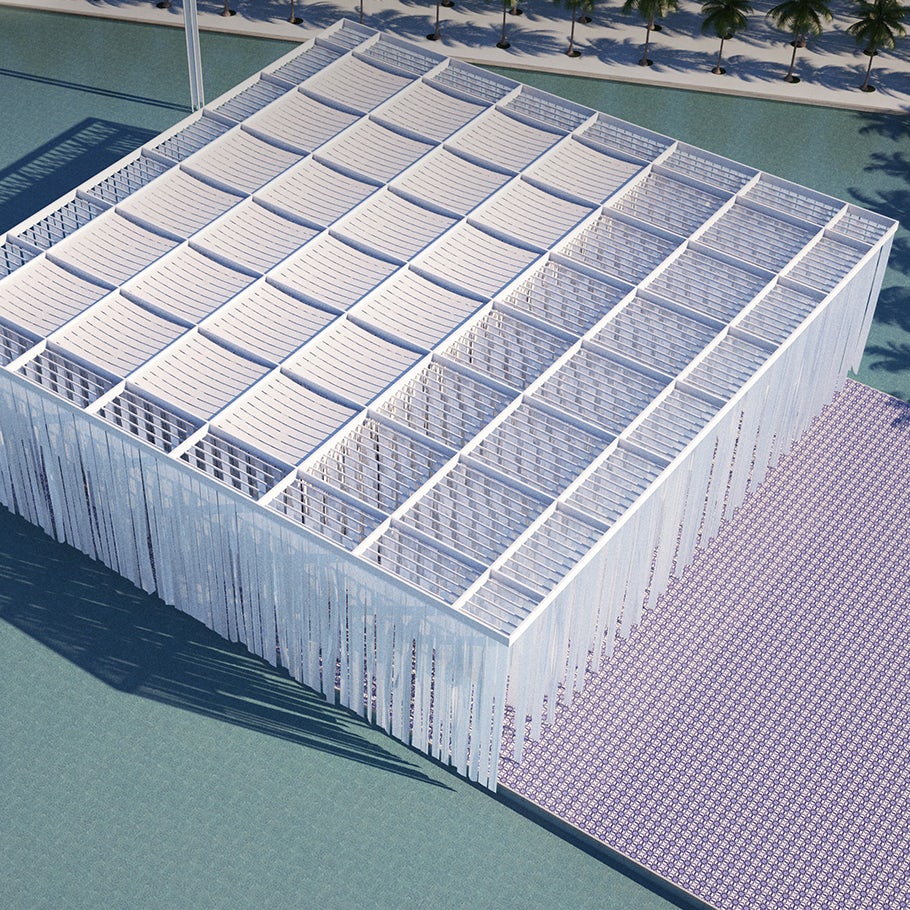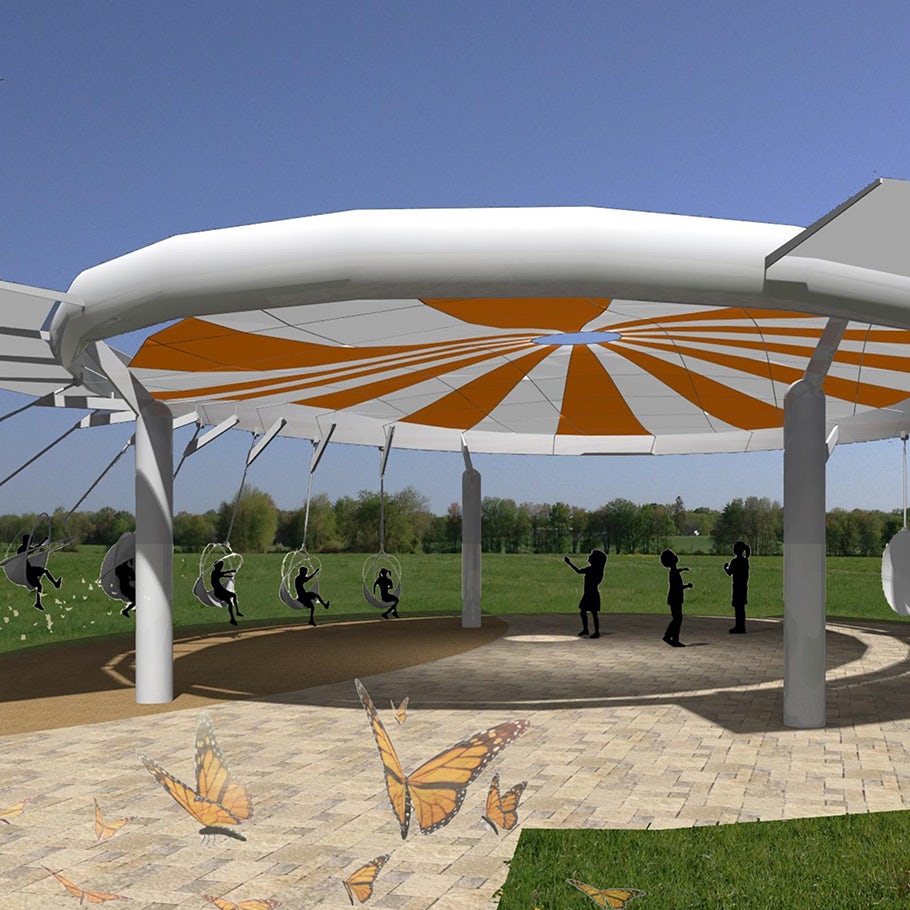Through much of the 20th century, architecture gave an upper hand to technology over nature. Buildings were sealed off from fresh air and were primarily accessible by car. In retrospect, this era will register as an anomaly: while movements like sustainability and biophilia may sport cutting-edge monikers, in reality, they represent a return to age-old building that engages climate and landscape.
Witness the burgeoning popularity of healing gardens. In 2012, Scientific American reported that 82 percent of surveyed assisted-living facilities’ directors and architects agreed “the design of outdoor space should be one of the most important considerations in the design.” In fact, medieval monastery infirmaries and early industrial-era pavilion hospitals in Europe and the United States included gardens.
A recently released continuing education seminar by Sunbrella®, entitled “Healing Gardens: The Role of Fabric for Shade and Seating,” charts origins of hospital gardens and of renewed interest in this category of landscape. The new course also provides guidelines to designers for parlaying past knowledge into the next generation of high-impact outdoor spaces.

Coraline (also at top), an honorable-mention winner in the 2015 Sunbrella Future of Shade competition, takes inspiration from sea coral and represents new thinking on shade designs for healing gardens and other public spaces.
According to “Healing Gardens,” a continuously expanding body of scientific inquiry has proven what historical figures knew about healing gardens intuitively — that exposure to nature dramatically reduces stress. Because research also is correlating diminished stress levels to faster, less complicated recovery times, healthcare providers are embracing healing gardens as a legitimate therapeutic investment.
The new online learning package clarifies, “It is important not to think of a ‘healing garden’ as a ‘cure,’ and instead to keep in mind the more complete definition of health as physical, mental, and social wellbeing.” In other words, a healing garden is not a substitute for medical treatment, and it can benefit anyone — family members, nurses —who need calm.

The course proceeds with lessons in designing healing gardens for this wide variety of users. Recommendations include widening pathways to accommodate a wheelchair or a person walking with an aide; designating an area for group exercise; allocating a variety of spaces for intimate or large-scale social interaction; and incorporating working plots so that users may directly participate in garden tending.
Other recommendations suit healthcare facilities that treat a specific condition or host a particular user group. Healing gardens for elderly people, for example, should take diminished vision into account and tint paving to reduce glare while edging it to contrast the surrounding ground. Gardens that host children should be planted with nontoxic species in case of ingestion. And garden designers need to empathize with chemotherapy patients’ heightened sensitivity to smells and sunshine.
There are some elements that should be universal to all healing gardens. Shade is one. “Everyone — whether ill or well — is drawn to the peaceful atmosphere shade provides,” the seminar states. In addition to covered porches, gazebos, and other traditional shading elements, “Healing Gardens” uses winners from the Wellness Gardens category of The Future of Shade competition to illustrate the multiple benefits of shading in healing gardens. The competition is a partnership between Sunbrella and Architizer to expand conceptual approaches to shading.

Although the Wellness Gardens winners represent cutting-edge creative license, their underlying principles are applicable to any healing garden’s shading strategy. Shaded areas made with lightweight fabric can be easily adjusted to suit varying degrees of privacy or sun protection — or even size, in the case of a modular installation. Structures can help with wayfinding, too, while those that feature an attention-grabbing design or fabric may encourage patients to use it as a destination for exercise.
Fabric seating is another must-have for healing gardens, according to the continuing-education course, as seating facilitates social exchange and eases the nature experience, among other benefits: “Healing-garden users may need frequent rest, so seating should be ample with a choice of sun or shade. Seating throughout a garden can also serve as a destination to encourage exercise. Using a combination of built-in as well as movable furniture lets users decide on the configuration desired.”
Whereas “Healing Gardens” discusses shading opportunities with an eye to inspiration, the latter part of the coursework brings daily practicalities to the fore. The seminar advises choosing fabric patterns that contrast with flowers and foliage, for example, and sourcing fabrics with pleasing tactility to encourage longer periods of garden use. Given the importance of hygiene and wellness in healthcare settings, it also goes into extensive detail about cleanability, antimicrobial treatments, and sustainability certifications.

The seminar’s lessons in shade and seating illustrate that every design melds poetry and pragmatics. In the case of healing gardens, this combination can measurably improve people’s lives. By learning more from “Healing Gardens: The Role of Fabric for Shade and Seating,” you will gain mastery of two fundamental aspects of a project type that, after an anomalous century, is coming back into its own to powerful effect.
Find out more about Healing Gardens and take the course.









